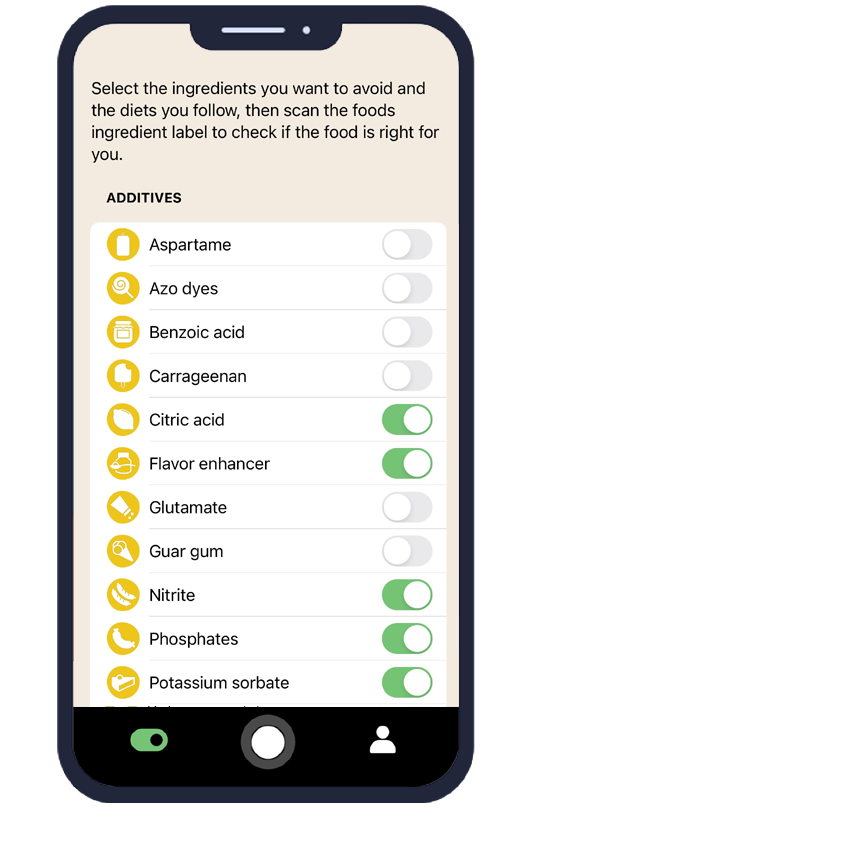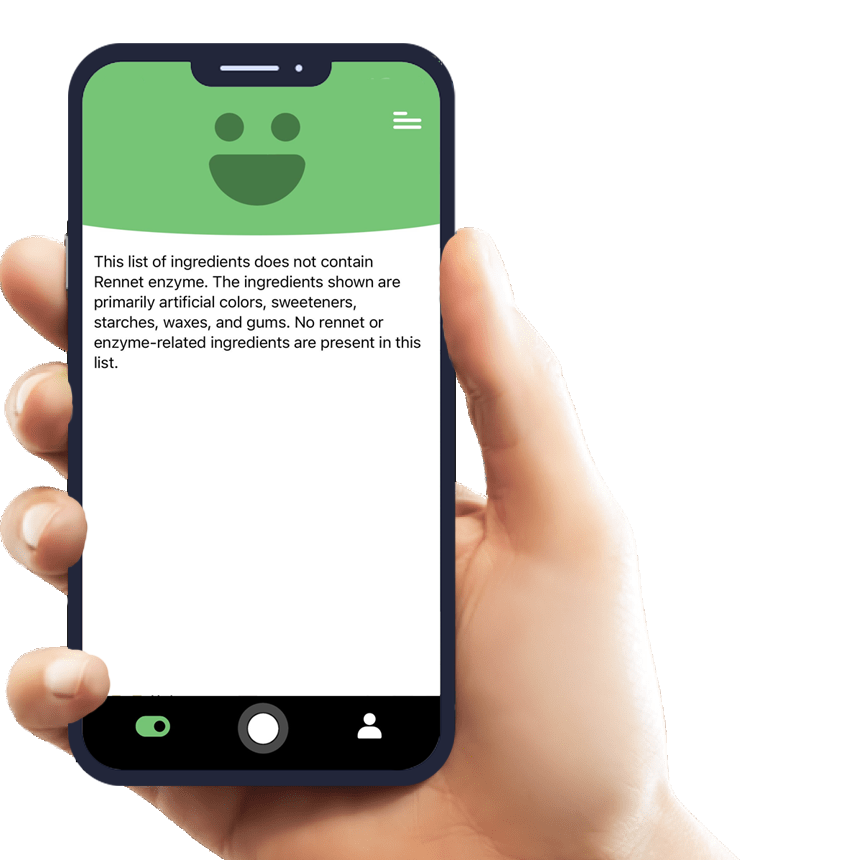Everything You Need to Know About Crustaceans and How AI Eat This Can Help
Crustaceans are among the most common food allergens worldwide, affecting millions of people who must carefully monitor their diet to avoid potentially dangerous reactions. These marine animals, including shrimp, crab, lobster, and crawfish, can trigger severe allergic responses in sensitive individuals. For those managing crustaceans allergies or dietary restrictions, identifying these ingredients in processed foods can be challenging and time-consuming.
The AI Eat This app revolutionizes how consumers navigate food safety by instantly scanning ingredient lists and identifying crustaceans in any language. This innovative tool empowers users to make informed dietary choices quickly and confidently, ensuring they can avoid problematic ingredients while maintaining a varied and enjoyable diet.
What Are Crustaceans and Where Are They Used?
Crustaceans belong to a large group of arthropods that live primarily in marine environments, though some species inhabit freshwater and terrestrial habitats. The most commonly consumed crustaceans include shrimp, crab, lobster, crayfish, prawns, and langostines. These shellfish are prized for their sweet, delicate flavor and firm texture, making them popular ingredients in cuisines worldwide.
Beyond whole crustaceans served as main dishes, these ingredients appear in numerous processed foods where they might not be immediately obvious. Food manufacturers often use crustacean-derived ingredients as flavor enhancers, protein sources, or texture modifiers in various products.
Common Foods Containing Crustaceans
- Seafood sauces and marinades
- Asian-style soups and broths
- Salad dressings and dips
- Flavored snack foods and crackers
- Surimi and imitation seafood products
- Some Caesar salad dressings
- Certain seasoning blends and spice mixes
- Processed fish products and fish sticks
Are Crustaceans Safe? What Does the Research Say?
For most people, crustaceans are safe, nutritious foods that provide high-quality protein, omega-3 fatty acids, and essential minerals like zinc and selenium. However, crustaceans rank among the top eight food allergens recognized by major health authorities worldwide, including the FDA and EFSA.
Regulatory Requirements and Labeling
Food safety regulations in most countries require manufacturers to clearly label crustaceans on ingredient lists when present in products. The FDA mandates that crustaceans must be identified in plain language on food labels, either in the ingredient list or in a separate "Contains" statement. These regulations help protect consumers with crustaceans allergies by ensuring transparency in food labeling.
The World Health Organization recognizes shellfish allergies as a significant public health concern, emphasizing the importance of proper food labeling and consumer education to prevent allergic reactions.
Risks for Specific Groups
People with crustaceans allergies face serious health risks when exposed to these proteins, even in trace amounts. Allergic reactions can range from mild symptoms like hives and digestive upset to severe anaphylaxis, a life-threatening condition requiring immediate medical attention. Cross-contamination during food processing can also pose risks for highly sensitive individuals.
Some people may experience crustaceans intolerance, which differs from allergies but still causes uncomfortable digestive symptoms. Additionally, individuals following certain dietary restrictions for religious, cultural, or personal reasons may need to avoid crustaceans entirely.
How AI Eat This Helps You Avoid Crustaceans
The AI Eat This mobile app transforms the challenging task of identifying crustaceans in food products into a simple, quick process. Users can scan ingredient lists with their smartphone camera, and the app's advanced artificial intelligence instantly analyzes the text in any language, highlighting potential crustaceans-containing ingredients.
The app's personalized filter system allows users to set specific dietary preferences and restrictions, including crustaceans avoidance. Once configured, the app provides immediate alerts when scanning products that contain problematic ingredients, helping users make safe food choices without lengthy label reading.
This technology proves especially valuable when shopping for international foods or products with ingredient lists in unfamiliar languages. The app's multilingual capabilities ensure that users can identify crustaceans regardless of the language used on packaging, providing consistent protection across diverse food markets.
Who Should Avoid Crustaceans?
Several groups of people need to carefully avoid crustaceans in their diet. Individuals diagnosed with crustaceans allergies must eliminate these ingredients completely, as even small amounts can trigger severe reactions. Those with shellfish allergies often need to avoid all crustaceans, as cross-reactivity between different species is common.
People following kosher or halal dietary laws typically avoid crustaceans, as these foods don't meet religious dietary requirements. Some individuals choose to avoid crustaceans due to environmental concerns, sustainability issues, or personal dietary preferences focused on plant-based eating.
Parents of children with food allergies must be particularly vigilant about crustaceans, as allergic reactions can be more severe in young people. Healthcare providers often recommend that families with a history of food allergies exercise extra caution when introducing new foods to children.
Tips for a Crustaceans-Free Diet
Successfully avoiding crustaceans requires careful attention to food labels and ingredient lists. Always read labels completely, as crustaceans can appear under various names or as components of flavor enhancers and natural seasonings. When dining out, inform restaurant staff about your dietary restrictions and ask detailed questions about food preparation methods.
Focus on whole, unprocessed foods when possible, as these are less likely to contain hidden crustaceans ingredients. Fresh fruits, vegetables, grains, and clearly labeled proteins provide safe options for those avoiding crustaceans. When purchasing processed foods, look for products specifically labeled as "crustaceans-free" or "shellfish-free."
Be aware of cross-contamination risks, especially in seafood restaurants or facilities that process multiple types of shellfish. The CDC recommends that people with severe allergies carry emergency medications and inform others about their condition.
Utilize technology like AI Eat This to streamline the process of identifying safe foods. The app's database continuously updates to include new products and ingredients, ensuring users have access to the most current information about crustaceans-containing foods.
Conclusion
Understanding crustaceans and their presence in various food products is essential for anyone managing allergies, intolerances, or specific dietary restrictions. While these marine ingredients are safe for most people, they pose significant risks for those with sensitivities and must be carefully avoided by certain groups.
The AI Eat This app provides an invaluable tool for navigating the complex world of food ingredients, making it easier than ever to identify and avoid crustaceans in processed foods. By combining advanced technology with user-friendly design, the app empowers consumers to make confident, informed decisions about their food choices.
Take control of your dietary health and safety today. Download AI Eat This for free testing and experience how technology can simplify managing your dietary restrictions while ensuring you never have to worry about hidden crustaceans in your food again!

70 filters
With over 70 filters, you can easily avoid certain ingredients and follow your dietary preference.

Paleo

Pescetarian

Ultra-processed food

Vegan







































































